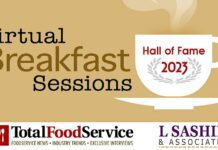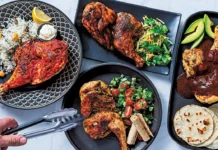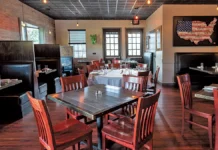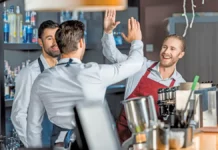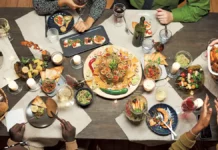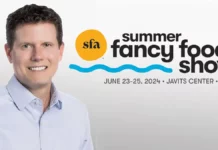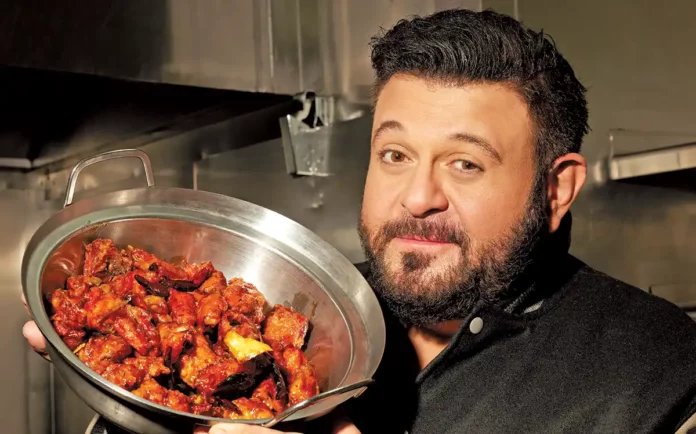
Adam Richman, TV personality, culinary traveler, cook and author, was born and raised in Brooklyn, New York. With the diverse culinary mecca of New York City at his fingertips, Adam’s love affair with—and intense interest in—food and food culture developed at an early age.
Long before discovering his thirst for travel, Adam had access to authentic delicacies from around the globe, all within the borders of his diverse Brooklyn neighborhood. However, it was cooking a plain cheese omelet with his Aunt Anne that became a defining moment of his early years. Watching simple ingredients such as eggs and American cheese magically transform from basic staples into a versatile composed dish was revelatory for a young Adam and ignited his fascination with the culinary world.
Richman grew up in the food mecca of New York City and began his love affair with food early on, sampling all of the diverse culinary specialties the Big Apple has to offer. From samosas to sushi, even at a young age, Adam had a desire to taste it all.
Years later, as an undergraduate at Emory University in Atlanta, GA, Adam began a food journal to document the standout food establishments he was discovering throughout the southeastern United States. Though he majored in international studies, his love of all things edible naturally drew him into the culinary world after graduation. Subsequently, he built a solid resume working in nearly every echelon of the restaurant world, from coast to coast and from the counter to the kitchen. Though he never trained professionally, Adam gained invaluable on-the-job experience.
After earning a master’s degree in fine arts from Yale University’s School of Drama, he traveled the United States acting in many regional theaters. The nature of his work allowed him to feed his appetite for the best local dishes across America – all of which found their way into his food journal. Adam’s first book, America the Edible, hit stands in 2010, and he is currently working on his fourth book.
In 2008, he began hosting Man v Food for Travel Channel, and has been a network staple ever since. His current show: The Food That Built America is an American nonfiction docudrama series for the History Channel, that premiered in 2019. Each episode outlines the development of a popular type of food or restaurant in the United States, typically focusing on the rise of two major companies that become rivals. Historical events in the relevant timelines are re-enacted for dramatic effect and interspersed with commentary by culinary historians, business experts, and food enthusiasts. With the show recently launching a new season, Total Food Service sought out Adam Richman to get his thoughts on what makes food brands successful in foodservice.
How did you transition from being a successful actor to becoming a food expert and a host on the History Channel?
I appreciate you saying that. I guess success depends on where you’re standing, right? I was a working actor, but I think that, it wasn’t like I was about to join the Marvel Universe anytime soon. But the thing was, I had been working in kitchens since I was about 11 or 12 years old, and in different capacities, whether catering kitchens in some instances, whether in restaurants as a busboy or a dishwasher or wiping down menus, using a butter knife to take the handles out of the little holders. I think that I’ve always grown up with a real awareness of food in so far as the language that food can be, having grown up in Brooklyn around a lot of first-generation immigrant communities. And to me, it wasn’t ethnic food, it was just what I ate at my friend Danny’s house or what I ate at Raymond’s house. And so having Sicilian caponata at the Agostino’s across the street, or going to the Syrian family who lived to the left of us and having kibbeh or shawarma, or my friend Benny Ng and having char siu or trying different types of ginseng, it didn’t feel like I’m in my ethnic era.
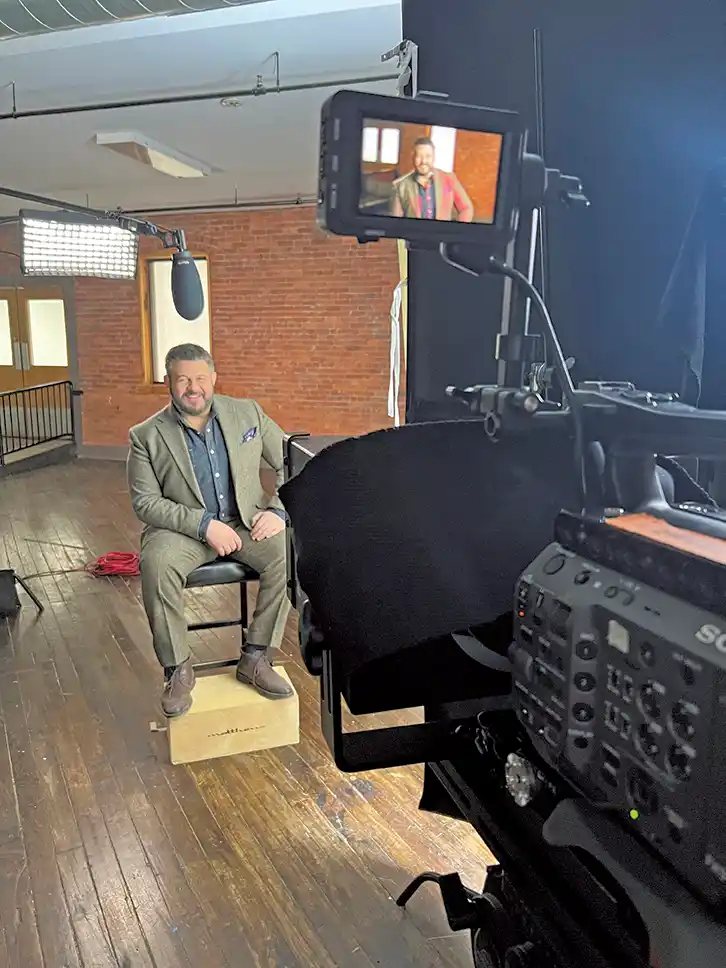
Was there an “aha” moment, where you knew this was what you wanted to do?
I read a book, and that by the way I get no kickback from, called The Renaissance Soul by Margaret Lobenstein. It helped me ascertain that what I really wanted to do was marry my passions for sort of being an entertainer and food expert. At the time, Food Network was like a burgeoning thing, Emeril had really only been the first big personality, and then you began seeing Bobby, and then Giada, Guy, Sandra Lee, and so on. And I think, oh, there is this other medium that I could avail myself of, and the agents I signed with for commercials out of Yale Drama said, hey, there’s this opportunity with Travel Channel, and I launched myself at it like a Polaris missile and was very blessed that it morphed into a career.
In your experience traveling the world and eating at a variety of restaurants, what do you see as common threads of restaurants that succeed?
The other day I was talking to Chef Judy Joo. It seems to me that the really great places manage to do a few things extremely well, and they stay the course. They don’t change fads, they don’t get out over their skis, and the thing is, people don’t realize you want to have a big menu, but it’s highly impractical to have a protein or an ingredient that you use in one dish out of a 40-item menu. It’s not really very feasible. But I realized that there was everything from burger places to chili parlors to Italian restaurants that I’ve been to, and places that have been through at least one, if not two world wars, a recession, a depression, and so on. And what they do is kind of follow the sort of Zen axiom of the number of ways to change is limited, the number of ways to stay the same is infinite. I think that’s the big thing.
Number two, local, local, local. Again, if you’re buying local, now in today’s much more food-savvy society, people are going to love it, but it also decreases shipping costs, increases accountability for your purveyors to you, to your clients. And if you’re feeding a local community, the ability to say to your clients this is from Jeff’s Strawberries. Where did we get our cheese? Believe it or not, our cheese comes from down the road. And who knows, they have a friend that works there, they worked there as a kid, so on and so forth. I think that local is maybe the second thing.
And the third thing is clarity of concept. Sure, sometimes you can throw a bunch of stuff against the wall, and random things will stick. But I remember, I lived in Atlanta, Georgia, after I graduated college and there was a place I loved. It was more kitschy than anything else called Dante’s Down the Hatch. And it was, I kid you not about any of this, this is all verifiable. It was a fondue restaurant jazz club set on a pirate ship, surrounded by a moat with real alligators.
So it’s the food or the show?
I would say those three things, doing one or two specific things, doing them well, staying local with both your identity and with your purveyors and your produce providers. And then I would say, for sure, clarity of concept. It’s not just like, we do burgers, we do burgers well, but it’s like, what’s our identity? Who are we? What’s the vibe we give out? And make sure it’s consistent.
The only thing I didn’t hear in the answer was anything having to do with service. Is service highly overrated?
I think great service is obviously paramount. I guess I figured that was sort of a given, like the letters R-N-S-T-L-E on Wheel of Fortune, where they just give it to you. I think that service is key!
If it’s QSR, if it’s sit down, fine dining, I agree that service is paramount. But I have been to wonderful places that have been around for eons where the service is efficient, but brusque and not necessarily warm and cozy. I mean, you could look at places like the Wiener Circle in Chicago, where they actually pride themselves on being kind of mean. Or you can look at places that are amazing, like barbecue meccas like Franklin’s, let’s say, but you understand even the service may be wonderful, the experience may be difficult with massive, massive, massive lines. I think that service, obviously, that’s where the rubber meets the road for your client.
Were you in the competitive eating business?
I want to make clear the distinction, right? I did food challenges at restaurants. I was never a competitive eater. I just think there is a rubric and a discipline and an almost athletic level of prep that goes into what Joey Chestnut does that I never did. But for me, it gave me my big break in the business. These things were gimmicks that the restaurants had used for eons as a little bit of marketing material and a little bit of a gimmick and a little bit of a sort of iconic, apocryphal tale surrounding their food. It was amazing. I’m glad I don’t necessarily have to do it anymore, but we all can’t box like Tyson or dunk like Jordan, but we all can eat under the right circumstances. We can eat quite a bit. And I think that honestly, it was like stepping into the ring for me. And that was kind of a cool experience.
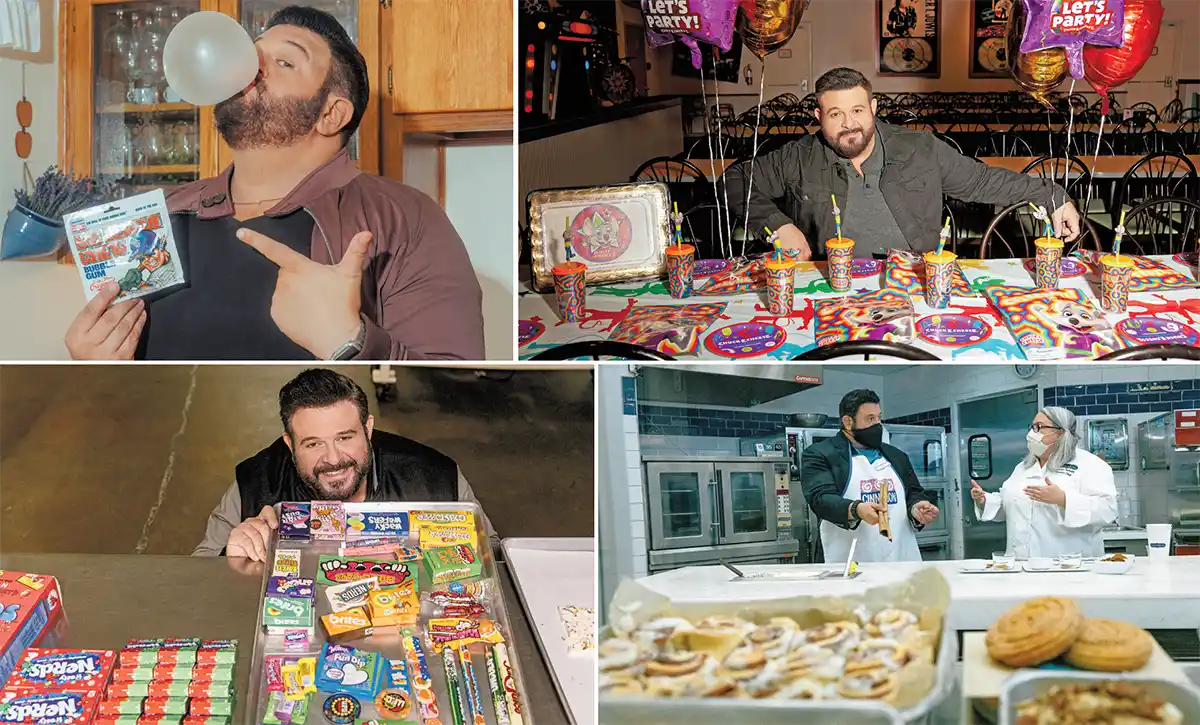
What are your thoughts on the evolution of food TV programming through the years?
A friend of mine is an instructor at a culinary school and told me that back in the day, people would come in with, I have this concept for a restaurant, and now I have this idea for a show. And I think that it’s a very weird dynamic. It’s interesting now with social media, with streaming services, more voices can be heard. And I think that whether it’s women voices, minority voices, voices of different ages or different regions of the U.S. or the world can get their spotlight and their shine as well, which I think is kind of awesome. I think it’s a bit overwhelming to an extent, right? Because you’re almost spoiled for choice.
And it’s sometimes hard to separate the wheat from the chaff. I think that anyone who’s really making culinary creations out of a place of love and with a bit of skill or ingenuity, even if they don’t have perfect knife skills, or they may not have a fancy schmancy kitchen, that at the end of the day, if these people are just sharing something they love that you might like too, there’s something kind of, I don’t know, not to be, very kind of pure and noble about that that I really appreciate. And I think it’s changing. I think now people are, like the game formats surrounding food are growing and changing by leaps and bounds. And I think that even the ingredients that we’re seeing, I think a young generation is going to learn about things like preserved lemon and Calabrian chilies and fennel pollen and all these things that they otherwise might never know about because they couldn’t afford them and don’t have access to them. And now you get this education in a really entertaining 22-and-a-half-minute package.
As someone who’s experimented with life as a vegan, what are your thoughts on where we are with plant-based foods, specifically on restaurant menus?
I think it’s cool. I love that there’s the availability if people want to. I have a friend who’s a very well-respected chef, and he and his girlfriend, they keep vegan at home, and then they only sort of are omnivores when they go out. But I think that now you can be a plant-based eater and not restrict yourself and still have a drippy cheeseburger and still have chicken nuggets and things like that and not feel as though you’re depriving yourself. And I think, yeah, food should be inclusive.
When you see a restaurant like Eleven Madison Park with a high-end, expensive menu that’s plant-based, do you see that as a one-off or do you see a true potential opportunity for other people to emulate?
I mean, I think that there are places like Daily Greens and Native Foods and in Los Angeles, Nature’s Grill. I think generally speaking, there is – I guess it’s to speak to Eleven Madison Park. I have no context because I never ate at Daniel Humm’s place when it was an omnivorous restaurant. When you hear Gordon Ramsay’s going vegan, when you hear that EMP is going vegan, when you hear that Jay-Z and Beyonce are vegan, I think you begin to disassociate it with people who smell of patchouli and are kicking around a hacky sack and you realize this is a vital and vibrant lifestyle choice that you can adapt and not deprive yourself. And I think on the same token, what’s really nice is that if you choose to be a meat eater or keep keto or be an omnivore, you’re also not vilified anymore. And I think that people now can sort of pick and choose. And I think that whether it’s a trend – I don’t know what the profit margin is and I don’t know what the spoilage rate is at those places, but I think that the market is there and if the market will bear it, people should absolutely seize the opportunity.
What we found confusing about plant-based was all the faux food. Too many faux burgers, too many faux hot dogs, too many faux sausages, too much faux chicken, too much trying to emulate what we’re already eating?
Right. I think that there are – it also depends on the restaurant’s budget and the chef’s level of culinary skill. Because I’ve had a bunch of sage in Los Angeles and had jackfruit tacos and gone to Crossroads and had calamari made out of heart of palm, and I think that’s really wonderful and clever. But I’ve also had really great burgers made with Impossible and that’s how it’s used. And I think that everything has a saturation point. How much wagyu can anyone eat? How much beef can anyone eat?
As you travel and do your show, is there genuine interest in healthy eating or is it BS?
No, it’s all good. I think for me, it’s definitely real. I mean, I’m approaching the half-century mark and want to make sure I’m here for the back half of the century as much as I can be. But I think other people – I think maybe, to be fair, in the Instagram aesthetic sort of age that we live in, people are making healthier choices because they know it leads to a better body. I think that there is definitely an awareness in people who are thinking about their joints and gluten and thinking about their heart when they think about fat and thinking about their skin when they think about sugars and so on and so forth, all of which are valid. I think we’re walking that tightrope, right, between duck fat fries and quinoa. Luckily, we live in a day and age where you can go to a gastropub and get both.
Your show, The Food That Built America, has evolved over the seasons. What do you think has made this thing successful? Is it your curiosity? What is it?
I think that people see themselves in these entrepreneurs. And as much as we hear names like Heinz and Hershey when we’re talking about Stadia or a town in Pennsylvania, that people forget that there was someone named Milton Hershey, that there was someone named Clarence Birdseye, that there was someone with the last name of Swanson. Or even the sheer fun factoid to realize there was a man named Duncan Heinz, but there was no lady named Betty Crocker. I think that there’s a little bit of seeing yourself in the entrepreneur and a little bit of, if they can do it, I can do it. The other thing is just getting that humanity behind the iconoclast sort of brand, this monolith of a brand, and going, it’s just a guy, a guy and his wife. Like, uh-oh, SpaghettiOs, how many times have you said it? Have you heard it? Have you heard it in an odd food context? And to realize that Ralph Miller’s son dropped the SpaghettiOs on his shirt and said, Daddy, uh-oh, SpaghettiOs. And a part of our cultural zeitgeist was built in a very human moment between a dad and his son. And The Food That Built America is sort of that beautiful key into opening this whole world of food and the foods that we know and love already that we never have seen before.
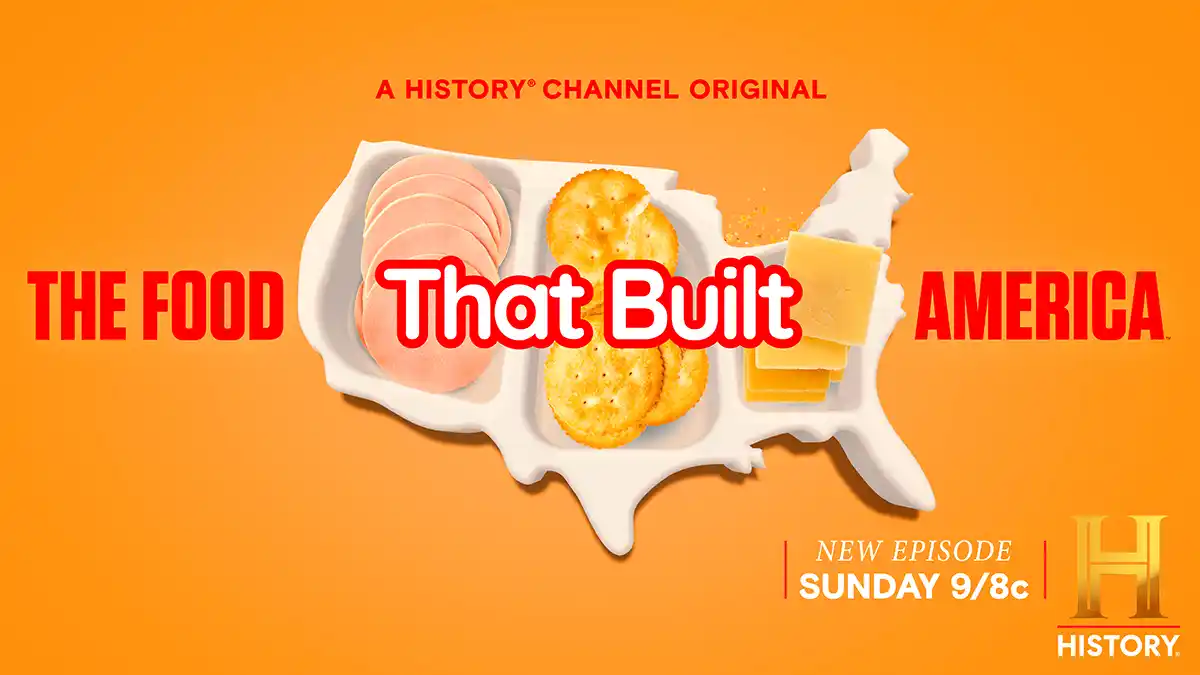
Some of those brands like Hershey’s and Heinz that you just mentioned, what do you think has made them successful, both in grocery retail and in restaurants?
Wow, that’s curious. It’s kind of case-dependent, but in Heinz’s, for example, the thing that I was very struck by was the fact that he never gave up. He had scores of businesses that had failed to his great detriment and just had this relentless drive and self-belief, and that was a big one. But I also think, Heinz also pivoted during the war and suddenly began selling in England, and now it’s a linchpin of brands in the United Kingdom. People say, oh, well, Heinz means beans. Like, that’s it. But it’s a brand from Pennsylvania. Whereas something like Hershey, when you’re doing something in a way that’s at a scale where it’s never been done, and then finding a way into other product categories, i.e. Hershey’s collaboration with Oreos or with Reese’s or whatever, that suddenly you’re finding a bit of both visionaries with kind of uncompromising vision. I think the other thing is kind of come-as-the-moment, come-as-the-person and finding the right thing for the moment.
Toasters were the hot new technology and the idea of creating something like Pop-Tarts. It’s the perfect product for the perfect time. Reagan says you could advertise directly to children in the 80s certain sugar cereals. It was the perfect product for the perfect time. And I think that’s the cool thing about The Food That Built America to me is true. And now I’m filming Mega Brands That Built America. That’s the one that really blew my mind. The fact that just the invention of pet food, and it killed me to really stop and think about this, dogs and cats had been utility animals and pest control for centuries. But that’s the truth. For centuries, cats were pest control. Dogs were shepherds or guard dogs or hunting dogs. And they were purpose-driven. And just the idea of creating a pet-driven food product suddenly changed millennia of human and animal interaction and made them part of the family. That’s the thing. A moment of individual, one man, one woman, seeing something in a new way. People like Mrs. Fields, people like the lady behind Pepperidge Farm. You can find these individual people that do something that maybe they said couldn’t be done or did it in the Pepperidge Farm case because her son was profoundly allergic and had myriad health problems. And then suddenly, boom, they make a choice that changes the entire landscape and trajectory of our country and civilization with the advent of a single product.
What’s the chicken and egg? Do you start with success in restaurant and food service and then grow your brand in supermarkets?
I think it’s having a very clear moment of inspiration and then figuring out a specific attack plan. This season, we cover Hires Root Beer as a great example. The idea of root beer, that it was a tea that Charles Hires had on his honeymoon, he knew that no one, no guy wanted to drink root tea. But during Prohibition, the idea of selling a root beer sounds kind of appealing. And this notion of I have this tea. This tea is wonderful. Other people will think it’s wonderful. And then focusing both, like what do they say, that luck is preparation meeting opportunity? I think that’s very much what you’re seeing here. Craft saw cheese spoiling, found a way to do it. Craft saw that slicing cheese would damage the rest of the wheel. How do we do pre-sliced cheese? And I think, C, having a moment of inspiration.
I liked it. Other people would like it. B, going, how do I execute that vision into something tangible and having it hit the market at just the right time? There’s no accident that in the 1980s that you began to see a proliferation of fast food chicken items, as we covered in past seasons. Why? Because farmers, beef ranchers, carried massive amounts of debt from the 70s into the 80s, had to sell off vast swaths of their herd to make their financial nut. And then beef was so expensive, fast food pivoted to chicken. Can you imagine the fast food landscape without a McNugget?
What role does high profile retail outlets play in the growth of successful brands?
That’s really interesting. Having covered so much of the big service stuff, we tend to focus on very much the iconic brands or iconic foods. And in Brands That Build, we’ve done everything from sporting goods to men’s razors and talking about King Gillette and so on. But the truth of the matter is, if your favorite chef, if he or she has a concession at an airport, at a stadium, odds are that companies like OTG or Aramark put them there. I think that it’s important to realize that despite all our technological advances, there is still a great deal of food insecurity in this country. There is still a great deal of people who don’t have access to Eleven Madison Park and to Noma and whatever. And I think that if Aramark is able to make those places or make certain foods accessible and affordable, I’m all for it.
Any favorite segment that you’ve done on your show or coming up that our restaurant or food service readers need to Google and find?
The pasta episode and the Italian food episode and the ice cream episode. My Mom was on hand for the ice cream episode which made it really special. Those three in particular, and I’m honored to be a part of our five seasons. The level of reenactments gets better and better season on season and more cinematic.
If my mom’s able to watch Steve Harrell make Steve’s ice cream and teach Ben and Jerry how to make their iconic ice cream. Who in turn, you know, informed, Cold Stone and this and that and the other that I think you’re going to love that. The other thing is right now, Italian food is beyond accessible. When you think about… Geno’s and so on. Totino’s that I think just stop and go wait, there was a time when Americans didn’t like, know or trust Italian food. People thought it was too garlicky, too spicy, too ethnic. But it’s important because how do you know where you’re going if you don’t know where you’re from? And I think that’s really important stuff.
When you began in TV, most of the brands you profiled were marketed through traditional media, radio, print TV. What’s the impact of social media and influencers on today’s food brands?
It cannot be understated because now people are so savvy with marketing. They slip it in and in a near subliminal way. But also how many people are now able to earn a living doing something they love by just sort of doing a sponsored post every couple of weeks. It’s created this whole new sector of the economy and of a food professional’s economy. You can’t make money in food without manufacturing food or being a chef. You could be someone who reviews cereal or goes to delis or eats a slice of pizza and suddenly you can make a living doing that.
And let’s be honest, the great thing is now influencers are climbing, scrambling all over one another to find a mom-and-pop spot that hasn’t been filmed yet. It’s like being a hunter, like I got the white elephant. The truth of the matter is all that does is benefit the places that are not in downtown Manhattan but they’re in Bayside, Queens. Suddenly if Bayside is getting their love and a key influencer says this sandwich looks great or this pizza looks amazing, okay, it does well for that influencer. They get a bunch of views. Maybe they make a little money. But now this mom-and-pop restaurant with a zero-dollar marketing budget has now been seen by hundreds of thousands of people. I’m absolutely all for it. But the thing that I don’t like is when that power is used for bad, to denigrate.
I don’t understand the cruelty and the cattiness and a competition is fine, it’s a healthy thing for the economy, for humanity, cool. But when it gets ugly and it gets diminishing and it gets elitist, I don’t think that necessarily has a place in the food world, in my opinion.
Crystal Ball, what’s next?
Another season of Mega Brands that Built America. Hopefully another season of Food That Built and another season of the show I have on Food Network UK. I am also working on a third book and maybe my first screenplay.
All photos courtesy of The HISTORY Channel



















